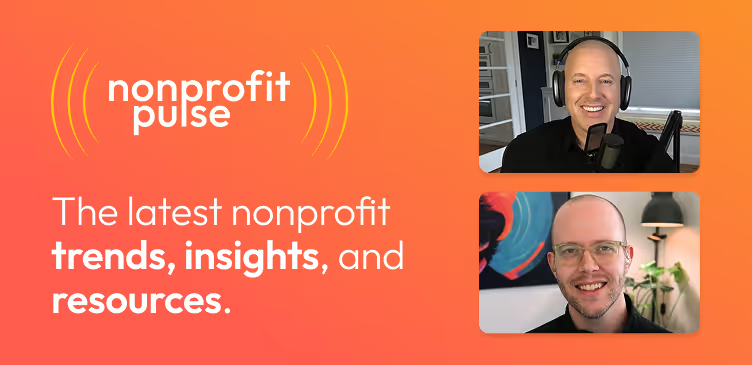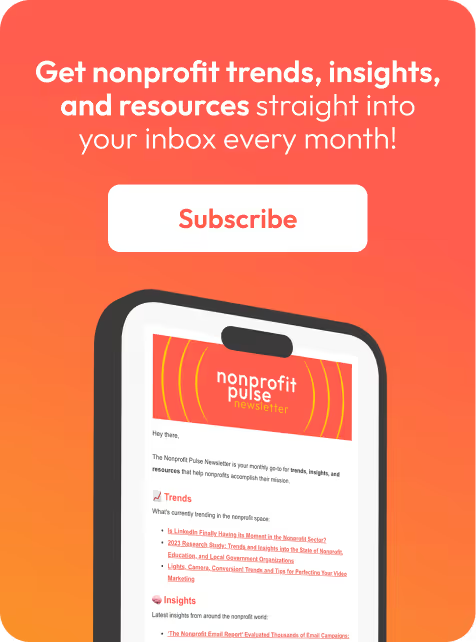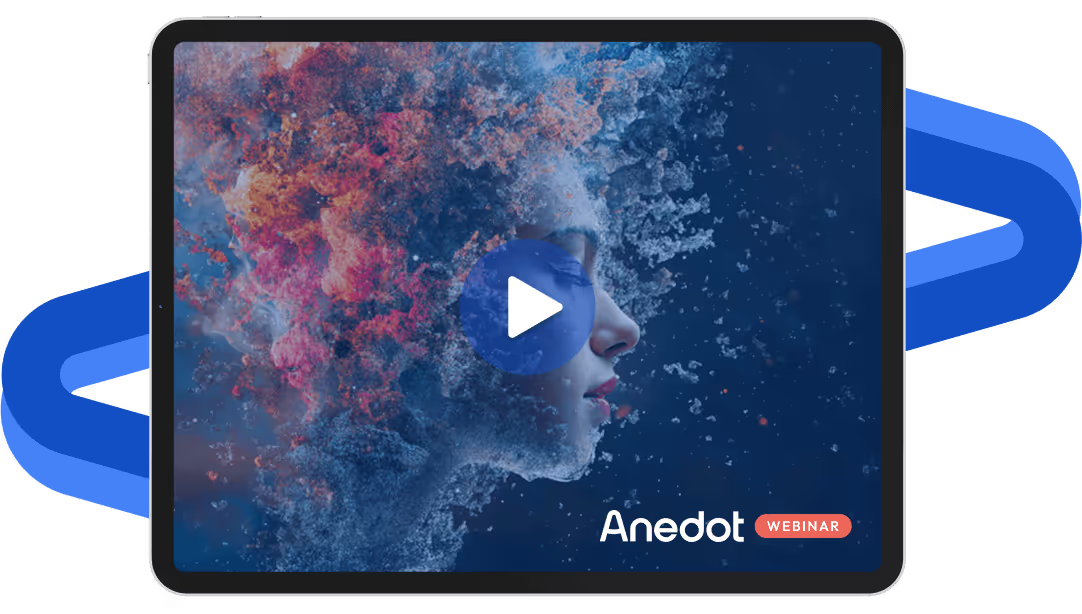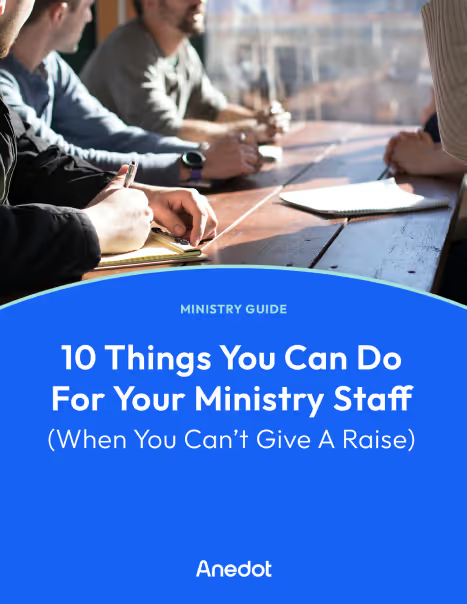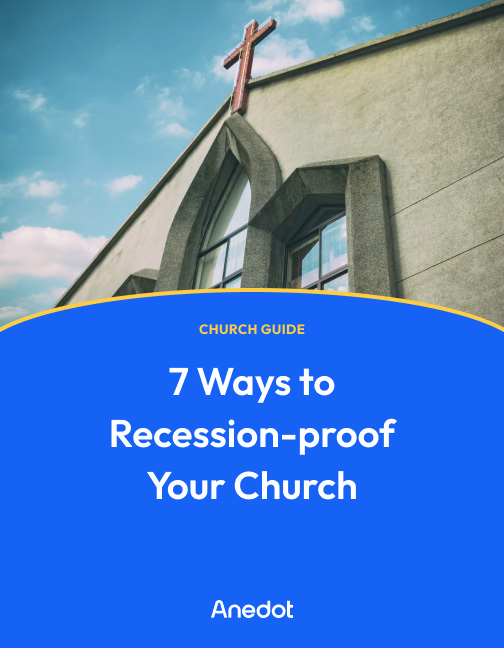Anedot Learn session transcript ↓
Patrick:
Hey, this is Patrick from Anedot. Welcome to Anedot Learn where we help you grow your organization through giving.
Today we're joined by Kennedy Williams, our own Customer Support Manager here at Anedot.
She'll be talking about how we handle support here at Anedot and how that might be helpful to you as you're looking to support your donors and do other kind of support initiatives, as it might help your organization.
What does the Anedot Support team look like day to day?

Patrick:
So I guess to start Kennedy, introduce yourself.
Tell us a little bit about what Anedot Support looks like day to day, and kind of give us a brief overview of everything.
Kennedy:
Yeah. Thanks for having me on today. So I've been with Anedot about three years, heading up the Support department.
And a day to day for Anedot Support looks like fielding tons of different inquiries from our customers, from our donors.
And that can be anything from setting up a new account to fixing an Anedot integration.
And with our donors to supporting them in anything they need, whether that's contacting an organization, getting a refund on a transaction that they made a mistake on, or changing some of their information.
So it can be any number of things that come through.
How does the Support team help both customers and donors?

Patrick:
Yeah. And how does customer support and donor support differ in your day to day?
Do you handle it differently? Or what have you found that makes donor support different from, say, customer or for organizations we might be serving, stakeholder support?
Kennedy:
Yeah, absolutely. So with customers, I think it's a little more centered around what they're doing with their organization.
So we try to be very specific to whether that's a ministry, a nonprofit organization, or a political organization. Very specific customer support based on what they need.
So that could be helping with donation page design that's catered to what their donors are going to be looking at, or making sure that their account is set up with different team members that they need and what access those team members could need for the account.
I think for customer support, it really gauges us towards thinking of the donor and considering the donor and what we're doing for them, but making sure that whatever their needs are, they're met and taken care of.
So that could be a vast number of different items.
With donor support, it's more specific because most donor requests are generally in a category or two.
But for them it's just making sure that our team is responding to them quickly, letting them know that we hear them, even if they're upset, making sure we know, you know, we empathize with you.
We understand that you're giving your treasures to support something that you believe in. So we're here to help you and we've got you covered.
Why is donor support important to Anedot?

Patrick:
And I think one thing that we hear a lot from donors and even from customers is that we approach donor support a little bit differently.
So maybe talk a little bit about how we approach it differently, and how that might be helpful to customers or might give them things they might want to do?
Kennedy:
Yeah, I think for Anedot, the start of approaching donor support differently begins with our leadership for the team.
We don't measure success for our team by how many inquiries they can close a day or how quickly they can respond to a donor.
It's really taking that personal experience. Being human with them, being genuine with them and resolving their issue.
So empathizing with them, understanding that if we were in their shoes, what would we want done for us? And really taking that personally.
I think our team is a little bit competitive in that aspect with other people of making sure this donor doesn't just get their issue resolved, but they have a great experience and a wonderful encounter with the person that they're dealing with.
Patrick:
When you're thinking of donor support and maybe some of the struggles that donors have or had have, what do you think are some of the ways that organizations might be able to make it so donors are less likely to be upset, right, or less likely to come to us?
What are like the most common scenarios that you're like, this is just so avoidable if an organization would have done this differently?
Is there an example or two that you might have?
Kennedy:
Yeah, absolutely. So I think it starts with the donation pages.
Note: Check out our Action Pages Gallery to see some of our favorite donation pages created by Anedot customers.
So the way that the account is setting up what the donors see and really keeping them in mind and saying, is this clear, is this easily understandable? Is this going to be miscommunicated in any way to a donor?
So I think the first step is making sure that what they put out there makes sense to a donor, that it's very clear, they can understand everything that they're doing. And nothing is kind of hidden or small print.
I think the second point for them is understanding, educating them that they have the ability as customers on our platform to manage donor information within their account.
So it's educating them when a donor reaches out or when there's an issue that arises. Here's how you can fix that immediately. Here's how you can take action and fix it.
And if there's a problem, letting us know immediately so that we can resolve that for them and prevent future issues.
How does Anedot Support handle high-volume periods and handle each donor with care?

Patrick:
Yeah, that makes a lot of sense. I mean, I think one pushback a customer might have is what if we're in like a period of high volume, right?
And I think you have some good answers for that because you're an expert on dealing with high volume and working with the team.
So what sort of advice would you give for people who push back and say, I just I have so much work? Like, how do I manage this all?
What tactics do you use to help manage those kind of high volume situations?
Kennedy:
Yeah, we actually have a platform that we use that organizes when a donor reaches out to us into what we call tickets.
And basically that's just a document where we have their requests, the donor's contact information.
And for us, that makes it really easy to keep everything from that donor in one place. So if they're reaching out multiple times or if we need to have notes on that information, we can.
And with that, it's responding quickly.
So letting them know we received your request, your inquiry. We're working on it right now and we'll get it resolved as soon as possible and then reaching back out and following up with that.
So for periods of high volume, I think one of the things we do as a team is really set a point person and say, if something happened, there's a really high volume or this account had an event and there's a lot of donors reaching out about it.
Setting a point person and saying this person is going to respond to every donor immediately and let them know we're aware, we're working on it, and you're next and we'll get to you as soon as we can and then resolve it.
And having the entire team kind of focused in an area and equipped to handle those things.
Patrick:
I think that you bring up a good point, too, on actually logging particular communications and making sure those are done in a specific way.
You know, I think that's something that I've seen a couple organizations struggle with where they might have multiple campuses or they might have multiple sites and when you have three or four people from the organization all reaching out at the same time, the donor probably isn't going to react well to all that.
They're going to be like, why? Why don't you have one person reach out to me?
So I think that's a really good point that you make, that it's important to make those notes and make sure that everyone is on the same page and working together because a donor probably just sees it as one organization and they don't want to see dysfunction, they want to see your organization, you know, able to handle things as they come in.
Kennedy:
Absolutely.
And hearing back from the same person, we've heard from our donors and feedback, makes a difference.
So I'm not working with a large team and someone's just grabbing my information and responding to me and doesn't know what's going on with my specific case.
If I talked to Katelyn this time, I'm going to talk to Katelyn the next time and she's going to know exactly what's going on. She's going to have referenced my information before and she'll know how to handle what's going on with my account.
So donors really don't have to worry about, is this going to be lost in translation? Is this going to be handed off and someone else won't know what's happening with what my situation is?
How do you ensure clear communication and understanding when dealing with a donor who may not be technically proficient?

Patrick:
Yeah, that makes a lot of sense.
I know one struggle that you work with, and I'm sure many of our customers work with too, is whether it be a donor or a customer or someone on their team who isn't the most technically proficient.
What things do you do to try to help somebody who isn't the most technically proficient and get them to a point where they understand?
Kennedy:
Yeah, I think our team too, some of them, aren't the most technically proficient, and I think that's a good thing in different ways.
But speaking to people in normal terms, so we're not here to reinvent the wheel. We're not trying to make things more complicated than they are.
So I think it's leveling with them, using terminology that's easy to understand and that's very clear, and asking clarifying questions.
So if a donor or a customer reaches out and we don't really know, but we kind of know what they're trying to say, we'll just ask and say, hey, is this what you meant? Is this what you were referencing? Is this something that we can fix for you?
And when they say yes, that's what I meant, that's it. We've established clear communication and now we both know we're on the same page with each other.
So I think, one, it's really listening and reading with comprehension to get what they're saying and using just layman's terms.
We're not trying to make life more difficult for them. We want this to be an easy interaction.
Patrick:
Yeah, for sure. And one of the thing too, that I can think of that I know we've done a few times too, is kind of the show not tell mentality.
So some people say like, why don't you just call me? It's like, because I can't show my screen.
And when you are dealing with something technical, usually you have to show your screen, whether it be a recording or a call.
So that's another thing I know. I don't know if you want to touch on kind of that process, but I feel like that's been like a learning experience, at least for me.
Kennedy:
Yeah, absolutely. We actually have shifted more from phone calls to what we call support meetings.
And what this does is allow our customers to choose a set date and time that works in their schedule where they can say, hey, I'm going to be at my computer, I'm going to have wifi, and I'm going to be ready to do this.
We can then share our screen. So we use a couple of different platforms, kind of like Zoom, so we can meet with them face to face and we can share our screen and walk them through exactly what we're doing.
So if they're needing to change something on their account or make an update or their team is just new, they have new team members that need to learn how to use Anedot.
We've seen a ton of success from having them visually learn what we're doing.
We'll also send video clips. So if a customer is struggling or they have new team members or they say, hey, we don't know how to use this specific feature and we want to we'll send a video.
We'll record it on their account so they know exactly what they're doing and we'll send them a clip and say, hey, this is exactly start to finish how you're going to do this on your account.
Patrick:
Yeah, 100%. I mean, I think what you and the team have done there has really helped a lot of people.
And hopefully our own customers can learn from that, too, that sometimes it is trying to provide the support in the way that somebody is going to comprehend it and solves the problem and doesn't just be like, okay, I got this done.
No. Is the person feeling pretty good about about where you left them at?
Kennedy:
Yeah. And I think that's something that we look at as a team is, how did the customer donor feel after this interaction?
So we'll actually send out some surveys and say, hey, you recently interacted with a member of our team. How did that go? Was it easy to understand them? Did they resolve your issue?
So we're not just looking for: yes, it was fixed. It was, did you have a great interaction? Did they explain it in a way that made sense to you? Did that work for you?
And we've actually seen with the support meetings really, really high ratings from those.
And I think on a phone call, too, it leads to extra frustration when you call someone hoping to have something solved and we can't do it over the phone and then you're left with, okay, well, I've already taken an action and now I have to take another one.
And with support meetings, that takes all of the frustration away because will handle it immediately.
How does Anedot Support use customer satisfaction survey data?

Patrick:
Yeah. Can you speak more to the satisfaction like the customer satisfaction surveys?
Because I think there's sometimes an opinion that, oh, you know, if you don't talk to them, they're not going to be happy.
Or if you're not doing this and this isn't as good.
Can you talk just about what you've seen on and when customers are happy and when customers aren't and kind of, you know, what are the drivers of those?
Kennedy:
Yeah, absolutely. So we started sending out customer satisfaction surveys. We have two different kinds, one for customers, ones for donors.
So we reach out to our customers after we've had an interaction with them for our support team and let them share their feedback.
Honest, that's good, bad, whatever it is, we want to hear it.
And I think a lot of the feedback has been constructive.
So when someone comes back and says, hey, this feature that you released is wonderful, I wish it also did this, we're able to follow up with them and say, hey, that's actually a really great idea. We've actually put a card together with our engineering team and they're going to look at enhancing that for you.
So I think with the positive, it's nice to see what's working well so we can continue to do that and so we can grow the team education and hey, that thing you did, it worked and it went over really, really well.
Let's keep doing that versus negative feedback when it comes through, really taking that, evaluating it with the team and saying, what could we have done better here?
What is this a gap in our product that we need to fix? And if so, reach back out to the customer and say, what were you thinking here? What do you want this to look like?
And really engaging them in positive and negative.
Can you walk me through a time when you or a team member had to deal with an upset donor and how you handled the situation?

Patrick:
Yeah, for sure. Can you give me an example of a time, let's say when you were working with an upset donor or somebody who, I guess there's always maybe somebody you can't please, an example of that and how you handled that or how the team member handled that? If it is an example of another team member?
Kennedy:
Yeah, absolutely. We actually have an escalation process in place.
So if someone does get very upset, our team knows they have support. I can call on my leadership or I can call my other team members and they'll be there to assist me.
And so personally, you can't please everyone when you're dealing with finances, things can get tense and you just put yourself in the position of that donor immediately.
So we have nothing to be defensive about. We're here to help them, so we don't take anything personally, really getting on their level and saying what is going on? Tell me exactly what's happening.
And then they usually start to relax when they're like, okay, someone's listening to me.
They care about what's going on and they say they're going to fix it and really just leveling with them and saying, I'm so sorry that that's happening, or I understand that you're frustrated here. Tell me exactly what you need to make this right.
And once that comes out, once there's no defense, there's no there's no pushback. And they're just like, we're here. What do you need?
Immediately you see, okay, the frustration comes down, the level of upset comes down, and they're like, oh, they're here to help me.
So I think really it is empathizing with them, letting them speak, letting them get out what they need to get out, and explain the situation of what's going on and then how can we fix this?
Immediately go to a resolution of how can we make this better and how can we make sure it doesn't happen again.
What is the ideal relationship between Anedot and customers?

Patrick:
And when you are working with, let's say, a customer on this, right, what is a typical relationship between like Anedot and customer, as it relates to donor support?
Well, what's your ideal relationship? We'll put it that way.
Obviously, different customers approach it in different ways. If it is a customer, it says, I want to have the best donor support I can. I want Anedot to be a great partner in this.
What does that relationship look like in a perfect world?
Kennedy:
Yeah, absolutely. So I think in a perfect world it looks like, we in our platform build in the ability for customers to manage their donor information.
So all of the changes that an Anedot staff member could make for a donor, an account holder can make.
So I think our relationship with that is really educating them, teaching them how to use the platform to the full extent so that they can be there for their donors and support them quickly.
Also, how they build their Action Pages, how they set up their account, the information that they're putting out there.
Is this contact information clear for donors? Are you able to be reached via email or phone or an address that we could make available to donors as well?
And really trying to bridge the gap between both of those.
Donors are our lifeblood. Without donors, a lot of the organizations that we support would cease to exist. So I think it's putting the value where it needs to be, and understanding we're trying to make something that works for donors, their safety, their security.
If they put their information in an Anedot form, it's secure and trusting that.
So I think building trust between the platform and the organization is a huge role for us.
Patrick:
And I think one point that also should be made is, you know, unlike a lot of other companies, our goals are 100% aligned with your goals.
You know, we don't have monthly fees, annual fees, like you raising money is the only way we're successful, too.
Note: Learn more about our straightforward pricing by visiting our Anedot pricing page!
So it's it's not always common in business, but it is with us that you have to be successful.
Donors have to be happy and want to give again for that relationship to work. So that's another thing too, that I think plays into this.
Kennedy:
Yeah, absolutely. And when I mentioned the lifeblood of the customers, organizations, it's also ours.
And we place a high value on our customers for entrusting us with their organizations and wanting to use our platform, but also in the donors for saying we want you to trust Anedot.
When you see that logo on the bottom of a donation page, we want you to go, yes, it's Anedot.
I know that it's safe. I know that it's going to be put together in a way that's easy for me. And I understand that the organization is using this platform for me.
What are some qualities to look for when hiring a support employee?

Patrick:
100%. And let's say we have customers who say, I really like what you're saying Kennedy. I think we need to beef up our own team.
Obviously you've been involved with, as we've grown our team on who we've hired and what's worked and what's not.
What advice, what would you say about our team that people should know?
And then what kind of advice would you give to a customer if they were looking to bring on somebody to do donor support on their own team?
Kennedy:
Yeah, I would say quality is better than quantity. You don't need a lot of people to do really great work and I think it's hiring the right person.
We hire a little differently, I would say, than other organizations that I've been a part of where we look at a culture fit, we look at passion. What do you love to do?
We've actually had people apply who say, I can close, you know, thousands of customer requests today. I can do all of this work.
But we really want to know the quality of the work you're putting out.
Do you passionately care about these donors in these organizations? Are you here for the long haul? You want to help? This isn't just a stepping stone.
I think at Anedot, support as a career is different. It just breaks the mold from how organizations typically do support roles.
Usually you think support in an organization, you think what everyone thinks, okay, it's a call center. There's a thousand people, they're just getting in the door so that they can get higher up.
In Anedot, this is a career. This is something that we take very seriously.
And our Support team partners with our Engineering team, partners with our Product team, making sure that everything flows perfectly.
Yeah. So I think with organizations who are looking to bring on support team members, one of the things to look for is personality really over technical ability.
We've had people apply with degrees and experience and it really wasn't a great fit for them.
So I think looking at a person who wants to be there, who wants to help your donors, who's very passionate about what your organization does, and passionate about understanding donors are the lifeblood of that.
Without those donors, you wouldn't have funding to do what you're doing.
And so bringing in the right person who fits that role, who's going to care for your donors the way that you do, is way more important than a technical ability or a degree.
Patrick:
And I think part of that, too, is maybe sometimes looking outside of what you would normally think, right?
I mean, if somebody has worked at a medical center, or has been, you know, at the front counter of Starbucks, or has waited on tables, or has been a hairdresser.
Right. I mean, some of these are real examples we have, right?
So I think it's important to find people that have worked with people and they can handle stress and not get offended.
And it seems like that's really important for for donor support because you do need someone who's going to go on the phone and and be able to handle that and want to do that on a day to day basis.
Because if someone is just good at fixing technical problems, well, a lot of the donor support especially is not usually technical problems.
It's usually making someone feel heard and and making them feel good and sometimes playing a part therapist, which I'm sure you've had some experiences with.
Kennedy:
Absolutely. And even on our team, we have people with medical backgrounds, we have pastors on our team, we have people who've worked in the service industry.
And I think being able to engage with a person on a human and genuine level to us is so valuable.
These people, they care, they're here, they want to help. They want to hear what your story is.
And I think that to us has made all the difference in what our team looks like today.
Closing thoughts

Patrick:
Well, we've talked about a lot of great things today, and hopefully a lot of this advice will help organizations as they're trying to donor support and work with our team to help their donors.
Is there any final advice or things that you'd like to throw out there before we close this?
Kennedy:
Yeah. For organizations who are looking for a platform that offers donor support, I'd say even if it's not Anedot, looking for one with the here to help attitude, who's got you covered, whether you need assistance with your account or whether you have donors who are going to need help along the way.
Really looking into that and choosing wisely to make sure that people who are giving their treasures to make your organization function well are taken care of, and that you as a customer are going to be heard, are going to be understood, and have the support that you need when you're fundraising.
Patrick:
Yeah, 100%. So again, this is Kennedy Williams.
She's the Customer Support Manager here at Anedot.
If you need to reach Kennedy or any of our support team, you can email us that help@anedot.com.
We look forward to seeing you on the next Anedot Learn.
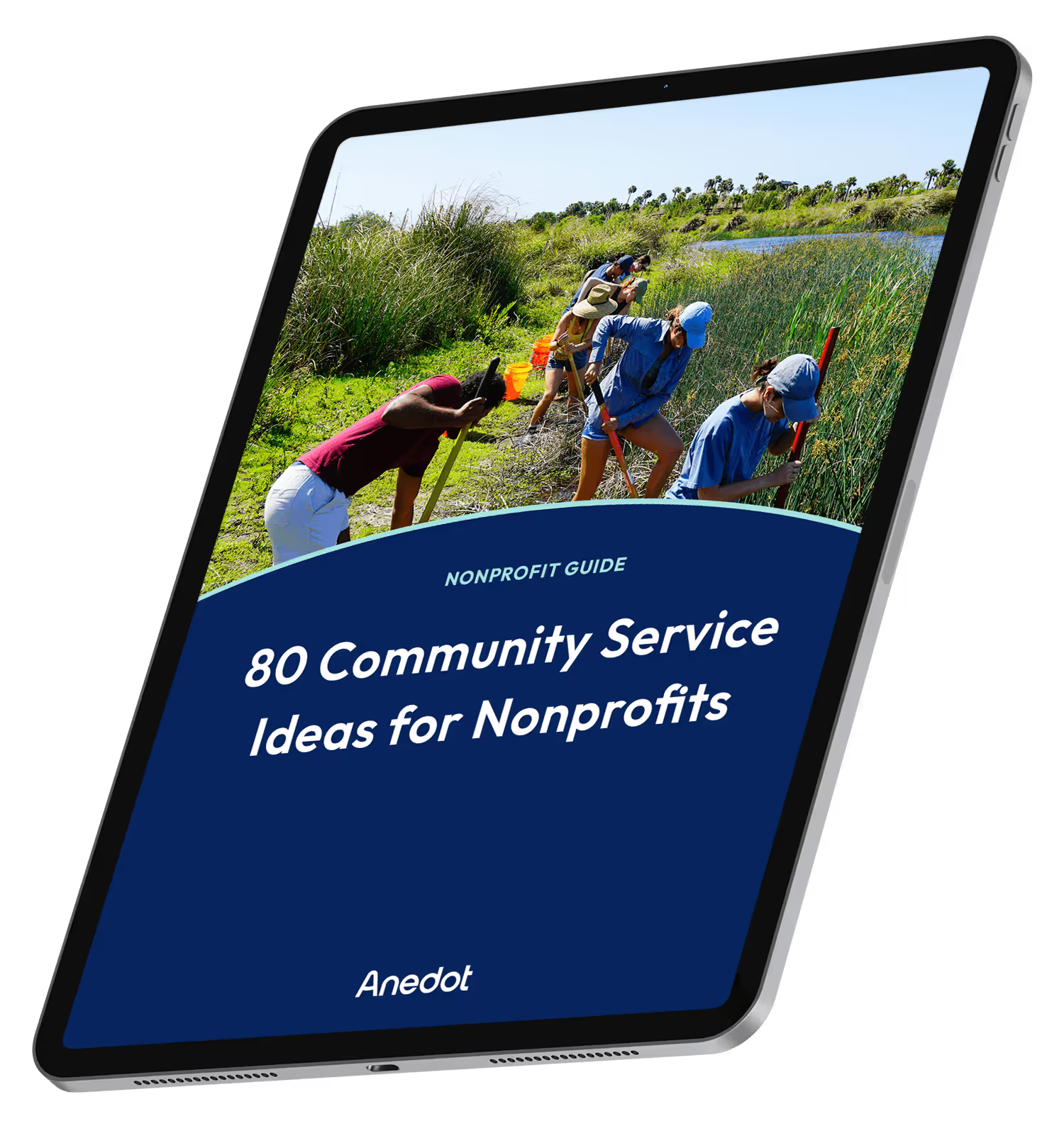
80 Community Service Ideas for Nonprofits

